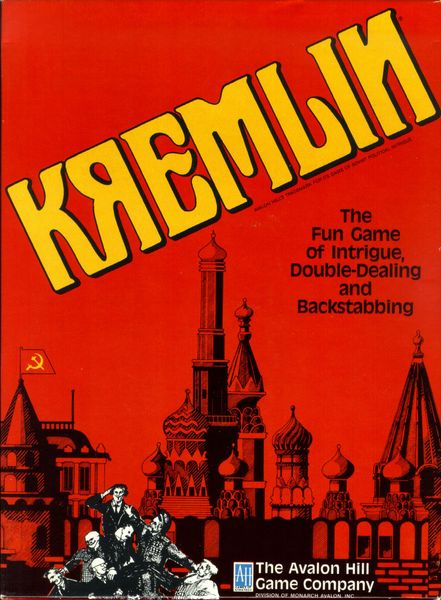Kremlin (1986) Board Game
Kremlin is a board game released in 1986 by designer Urs Hostettler and published by The Avalon Hill Game Co. It falls under the negotiation and political category, where players take on the roles of members of the Soviet Politburo vying for power and influence.
Game Components of Kremlin
How To Setup Kremlin
Gameplay Mechanics and Game Objective
Players aim to accumulate the most influence points to win the game. This is achieved through various actions such as manipulating the Party cards, assassinating opponents, and strategically placing influence markers on the board. The game is divided into three main phases: Party Congress, Party Leadership, and Party Faction.
Player Experience
#
Pros:
#
Cons:
Personal Thoughts on Kremlin
Kremlin is a deep and immersive game that offers a unique experience in negotiation and political strategy. The build quality is sturdy, and the artwork is thematic and engaging. The game is well-priced for the amount of content it offers, but availability may vary for new copies.
For fans of negotiation and political games, Kremlin is definitely worth your time. It is best suited for players who enjoy strategic thinking and player interaction. Those who prefer faster-paced games or lighter themes may want to skip this one. Alternatives like Junta or Twilight Struggle offer similar experiences for those looking to explore different options in the genre.
Game Components of Kremlin
How To Setup Kremlin
To set up Kremlin, players start by distributing the politician cards, each representing a figure within the Soviet Union’s political hierarchy. Each player secretly assigns influence to these politicians, who may or may not currently hold important offices. The gameboard is set up with the various offices such as the Party Chief, KGB, Foreign Minister, and Defense Minister. Players also receive a set of Intrigue cards and influence counters.
Gameplay Mechanics and Game Objective
Mechanics
Game Objective
Player Experience
In Kremlin, players are immersed in a complex web of political maneuvering, where secrecy and strategic timing are key. The game is renowned for its depth and complexity, making it a cult classic among board game enthusiasts. Players must balance the risks of declaring influence against the potential rewards, all while managing the health and stability of their supported politicians.
Pros
Cons
Personal Thoughts on Kremlin
Kremlin is for experienced board game enthusiasts who enjoy complex, strategic games with a strong social interaction component. It is ideal for those interested in historical themes, particularly those curious about the inner workings of the Soviet Union’s political apparatus. However, it may not be the best fit for casual gamers due to its complexity and lengthy gameplay.
We are supported by our audience. When you purchase through links on our site, we may earn an affiliate commission, at no extra cost for you. Learn more.

